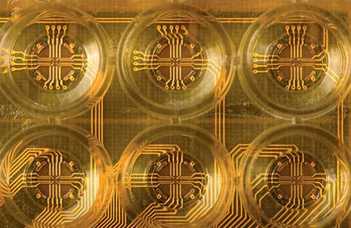Development of multielectrode systems
Development of multielectrode systems

A major challenge of the 21st century is to understand the activity of neural networks and how network function changes in people with neurological and psychiatric disorders. Before drug candidate molecules can be used clinically, it is essential to be able to study the activity of individual elements of networks of up to thousands of neurons in in vitro cell cultures and to statistically analyse how the network responds to different drugs.
Understanding network activity is aided by the ability to simultaneously record the electrophysiological activity of up to hundreds of cells (so-called multi-electrode array or MEA systems). To do this, cells are plated on multi-hole plates with an electrode matrix in each hole, which can be used to measure the potential changes generated by cells in close proximity to the electrodes. However, for practical, pharmaceutical studies (comparing different cell types, testing the concentration-dependent and toxicity effects of different drugs, long-term effects, etc.), a much higher throughput technology would be needed. There is also the problem of capturing and storing the resulting data volume and efficient signal processing.
The aim of our collaboration with Appercell Biotech Ltd. is to create a technology that allows the network activity of cells generating electrical potentials to be automatically recorded for up to months and the signal processing to be done automatically in the background using cloud computing.
The focus of the research, besides the development and fine-tuning of the measuring plates, is the processing of the data. Because during a measurement a huge amount of data is generated, which has to be stored, decoded, analysed and evaluated. The collaboratively developed software components are capable of displaying electrophysiological data from hundreds of cells simultaneously from different perspectives (see below).

